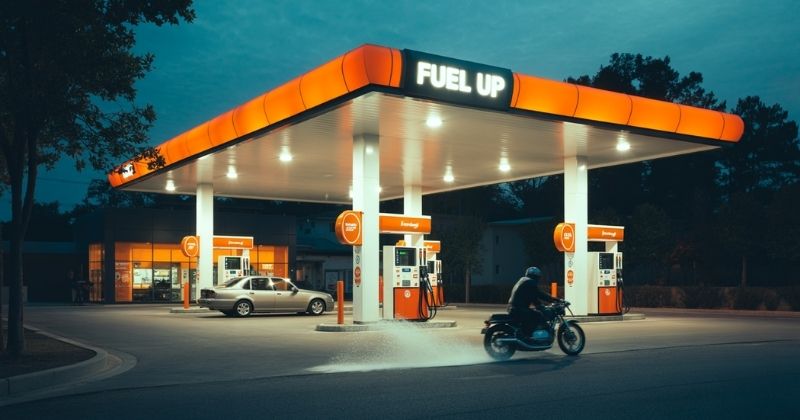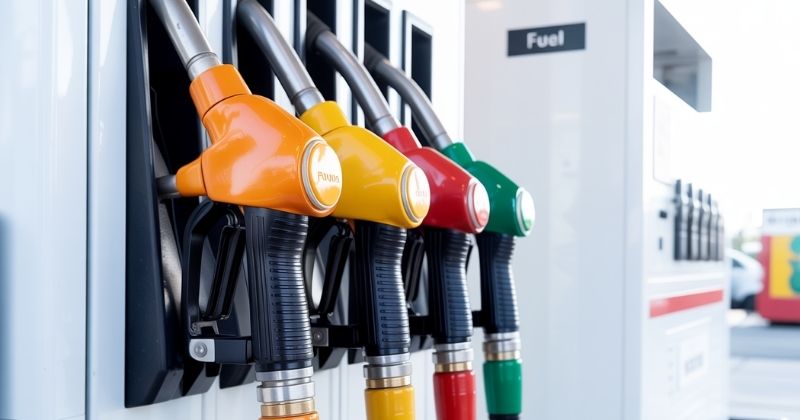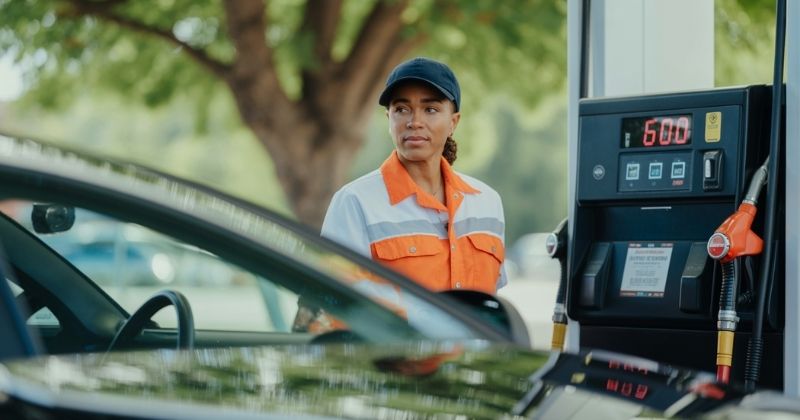
The Department of Petroleum and Mineral Resources (DPMR) has officially released the revised fuel price adjustments, which are scheduled to take effect from Wednesday, 6 August 2025. These adjustments come after a month of notable changes in global energy markets and currency movements, influencing the local fuel pricing structure for August. These pricing shifts will directly affect millions of households, transport companies, and businesses across South Africa, particularly ahead of the busy spring season.
Key Takeaways
- Petrol Prices Drop, Diesel Costs Surge: South African motorists will benefit from a 28 cents per litre reduction in both 93 and 95 petrol from 6 August 2025. However, diesel users will face a significant hike of 63 to 65 cents per litre due to ongoing global supply constraints.
- Global Market Forces Drive Divergence: A slight drop in Brent crude oil prices and a stronger rand helped bring petrol prices down, while international diesel and paraffin prices rose sharply because of low US stock levels, refinery shutdowns, and tight global supply.
- LPGAS Offers Some Relief: While most fuel types saw mixed adjustments, Liquid Petroleum Gas (LPGAS) prices will decrease by up to 78 cents per kilogram, offering cost savings for households that rely on gas for cooking and heating, especially in the Western Cape.
About Arcadia Finance
Get your loan the easy way with Arcadia Finance. No application fees. Compare offers from 19 trusted lenders, all registered with South Africa’s National Credit Regulator. Fast, reliable, and tailored to your needs.
Oil Market Recovery and Global Factors in July
During July, international oil prices rebounded significantly following a volatile and uncertain June. This recovery was, however, tempered by ongoing concerns in the global market, particularly due to the confirmation of new US tariffs toward the end of the month. These trade tensions created persistent volatility in the markets, with energy traders reacting cautiously to the evolving geopolitical situation. The energy sector remained in a state of flux as investors tried to anticipate how the US–China tariff conflict would influence global oil demand and the broader economic climate heading into the final quarter of the year.

Rand Exchange Rate Movement and its Influence
For most of the month, the South African rand managed to hold firm against the US dollar. However, towards the end of July, the local currency experienced renewed pressure, largely in response to global uncertainty over tariffs and market sentiment surrounding their broader impact. The rand’s movement remained a key variable in the fuel price formula, affecting the extent of adjustments for August. Despite some resilience, investor confidence in emerging markets such as South Africa took a knock, especially as risk-off sentiment swept through global equity and currency markets.
Despite the turbulence in global markets, the early part of the month showed stability in both the oil price and the rand exchange rate. This enabled initial over-recoveries in petrol prices to persist, while limited diesel availability placed additional upward pressure on diesel prices. The combined effects of these market forces have led to a mixed set of fuel price changes. Motorists using petrol-powered vehicles will feel modest relief at the pumps, while transport operators and businesses reliant on diesel will face significantly higher running costs.
Summary of Fuel Price Adjustments for August
As a result of market conditions and the pricing formula, the following fuel price changes will take effect:
- Petrol 93: A reduction of 28 cents per litre
- Petrol 95: A reduction of 28 cents per litre
- Diesel 0.05% (wholesale): An increase of 65 cents per litre
- Diesel 0.005% (wholesale): An increase of 63 cents per litre
- Illuminating Paraffin (wholesale): An increase of 32 cents per litre
- LPGAS: A decrease of 69 cents per kilogram
- LPGAS (Saldanha Western Cape): A decrease of 78 cents per kilogram
These figures signal a complex energy outlook, where consumers may see some relief in petrol costs, but broader supply pressures and global bottlenecks are driving up other fuel categories sharply.
Brent Crude Price Trends and OPEC’s Role
The average price of Brent Crude oil during the review period declined marginally from 69.36 US dollars to 69.06 US dollars. The main factor contributing to this modest decrease was OPEC’s decision to expand production levels. This move, coupled with apprehension over US trade measures including secondary sanctions, introduced uncertainty about global economic growth and demand for oil. Analysts suggest that OPEC’s production strategy is aimed at maintaining influence in a market grappling with unpredictable consumption patterns, driven by inflationary fears and interest rate speculation in major economies.
The international price of petrol decreased, mirroring the drop in crude oil. However, the global diesel and paraffin markets experienced price increases. These were driven by persistent low inventory levels in the United States, unplanned shutdowns at key refineries, and additional refinery closures in the European Union, all of which contributed to a constrained global supply environment. This tight supply chain has been exacerbated by ongoing maintenance backlogs, increased summer demand in the northern hemisphere, and shipping constraints, particularly in the wake of recent geopolitical unrest.
Impact on Basic Fuel Price Contributions
These market dynamics led to a decrease in the Basic Fuel Price (BFP) contribution for petrol by 23.49 cents per litre. In contrast, the contributions for diesel and illuminating paraffin increased by 69.94 cents per litre and 35.57 cents per litre respectively. These figures reflect the shift in global supply and demand pressures during the past month.
The gap between petrol and diesel BFP contributions further highlights the structural imbalance in refined product supply chains, which may continue to pose challenges into the next quarter.

Price Movements in Propane, Butane and Currency Effects
Propane and Butane prices showed a decline throughout the assessment period. Meanwhile, the rand showed a slight improvement on average against the US dollar, moving from 17.84 to 17.76 rand per dollar. This relative strengthening of the rand helped reduce the fuel price contributions by between 4.00 and 5.00 cents per litre across fuel products. While the local currency’s minor gains provided some cushioning, they were not enough to offset the broader international supply pressures, especially for refined fuels.
Slate Levy and LPGas Price Regulation
In terms of regulatory adjustments, the Slate Levy has been kept at zero cents per litre for petrol and diesel products, consistent with the Self-Adjusting Slate Levy Mechanism guidelines. In addition, the Department confirmed that the Maximum Refinery Gate Price of imported LPGas through the Port of Saldanha Bay will be set at R14,633.10. The Maximum Retail Price of LPGas in the Western Cape is set at R35.30 per kilogram, effective from 6 August 2025. The reduction in LPGas pricing offers welcome relief for households relying on gas for cooking and heating, particularly in provinces where electricity reliability remains inconsistent.
Pump Prices for August 2025: Inland vs Coastal Regions
Below is a detailed breakdown of pump prices, comparing the official figures for July and the updated prices for August. Note that diesel prices listed are wholesale rates and may differ at the pump due to distribution and retail costs.
Inland Region
| Fuel Type | July Official | August Official |
|---|---|---|
| Petrol 93 | R21.79 | R21.51 |
| Petrol 95 | R21.87 | R21.59 |
| Diesel 0.05% (wholesale) | R19.35 | R20.00 |
| Diesel 0.005% (wholesale) | R19.41 | R20.04 |
| Illuminating Paraffin | R13.15 | R13.47 |
| LPGAS (per kg) | R36.77 | R36.08 |
Coastal Region
| Fuel Type | July Official | August Official |
|---|---|---|
| Petrol 93 | R21.00 | R20.72 |
| Petrol 95 | R21.04 | R20.76 |
| Diesel 0.05% (wholesale) | R18.52 | R19.17 |
| Diesel 0.005% (wholesale) | R18.65 | R19.28 |
| Illuminating Paraffin | R12.14 | R12.46 |
| LPGAS (per kg) | R33.61 | R32.92 |
| LPGAS (Saldanha Western Cape) | R36.08 | R35.30 |
The inland diesel hike of over 60 cents per litre is expected to ripple through transport logistics, agriculture, and manufacturing, potentially leading to cost pressures in consumer goods and food prices.

Revised Price Tables Reflect Official DPMR Data
The figures presented above are based on the officially published fuel price data from the Department of Petroleum and Mineral Resources and reflect the adjustments applicable from August 2025. Motorists and fuel retailers are advised to take note of the changes to budget and plan accordingly. With inflationary pressures already affecting household budgets, the mixed bag of fuel price shifts will require consumers to be strategic in managing transport costs and energy use in the weeks ahead.
Conclusion
South Africa’s official fuel price update for August reflects the complex interplay between global oil supply dynamics, local currency movements, and product-specific demand pressures. While petrol users can look forward to a moderate reduction at the pumps, the steep increase in diesel costs is likely to impact transport and logistics sectors. Consumers are encouraged to prepare for potentially higher goods and services costs linked to rising diesel expenses, even as LPGAS users receive a welcome reprieve.
Fast, uncomplicated, and trustworthy loan comparisons
At Arcadia Finance, you can compare loan offers from multiple lenders with no obligation and free of charge. Get a clear overview of your options and choose the best deal for you.
Fill out our form today to easily compare interest rates from 19 banks and find the right loan for you.


